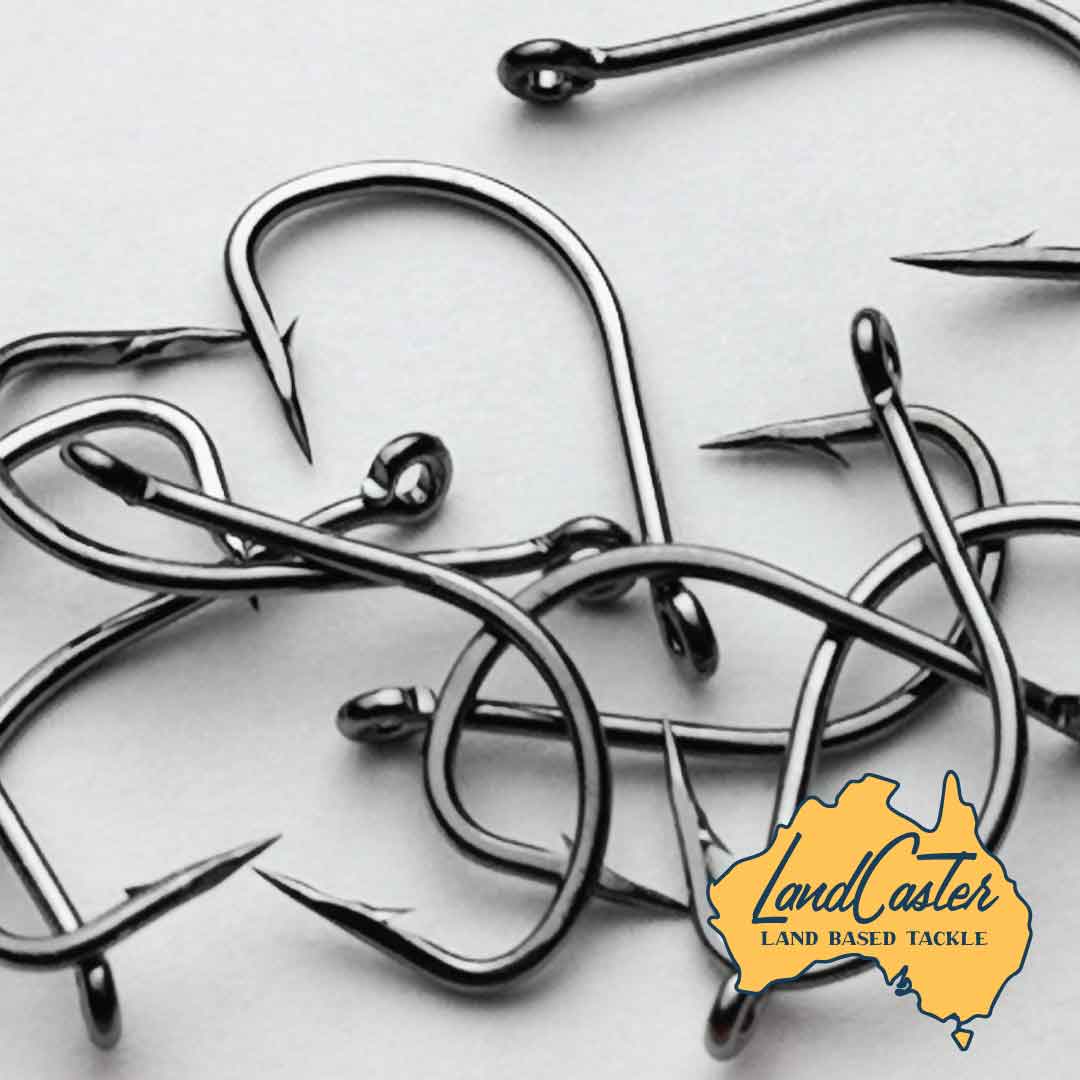
Float Fishing for Luderick: How to Perfect Your Rig and Land More Fish
Luderick, also called Blackfish, are found along Australia's east coast and most often caught with a float fishing rig. New South Wales has a lot of Luderick fishing possibilities. Sydney Harbour and surrounding ocean rocks have healthy stocks of easy to catch Luderick. Luderick range from southern Queensland down to central South Australia and northern Tasmania.
Luderick Can Grow to 70 CM
They are schooling fish and grow up to 70 cm and 4 kilos. That's an amazing fish but most of them are going to be half that size. Luderick are excellent sport and taste great on the table. There's no better way to spend the day than Luderick fishing with a float rig especially when you have found large schools.
In the estuary and harbour, Luderick can be found around rocky outcrops with deeper water drop offs and weed beds. Occasionally smaller fish can be found in 2 metres of water around piers, pylons, and rocks inside the habrour. Jetties and breakwalls are good places to fish for Luderick, too. Plenty of Luderick are caught on a spin reel off the wharf.
Luderick Can Be Caught off Rock Platforms, Piers, and Breakwalls
Ocean rock platforms are popular for fishing for Luderick. Spots that already have weed growing naturally will be good spots to try. In the estuary start fishing around 6 feet deep and ocean rock platform start around 10 feet deep. Adjust your depth if you aren't catching to find where the fish are in the water column.
Luderick are not very nocturnal it seems and they are almost entirely caught during the day. Early morning and late arvo are good times especially if the tide is low an hour and a half before or after sunrise or sunset. Low tide is good because it lets Luderick anglers get closer to the waters edge. Always pay attention to the ocean swell, wear cleats, and wear a life vest.
10 to 14 Foot Medium Action Rods are Great for Float Fishing for Luderick
A 10 to 14 foot long rod is good for Luderick fishing the rocks. Float fishing will be more fun with a longer rod with a lighter action. Checking the bait with a 10 foot depth is not as easy with a 7 foot rod as it will be with a 12 or 14 foot rod. Medium to Medium Light rod action is always a lot of fun fishing for Luderick. Spinning reels and Alvey centre pin reels are the most common. There are newer style lever drag reels but those are costly.
I prefer the good old eggbeater reel with a rear drag when I am not using my Alvey 55a or Alvey 60a. A long rod with a rear drag reel can help fight big fish from going under rock ledges and breaking off. Rear drag reels and a long rod are the best bet to skull drag a big Luderick up.
Floating Monofilament is Best for Float Fishing for Luderick
Floating line is the best for fishing for Luderick. Monofilament main line in the 12 to 20 lb rating is good. Fraying on the rocks is common so pay attention to nicks and cuts on your mainline and leader. I sometimes use braid that I wax to help it float but I prefer monofilament floating line. Monofilament just floats better and doesn't get tangled in the wash.
Float fishing setups may seem complicated at first but they are no harder to tie than paternoster rigs. On the mainline put a bobber stopper on. Then place the float guide on the line and add another stopper. The bottom stopper can help save your float if you break off your mainline at or above the swivel. After the second bobber stopper add a swivel. Quick connects also work but one with a swivel is best. This is the most effective way to reduce lost rigging and keep fishing uptime as high as possible.
Floats With an Eye on the Bottom Stem Are Best
The best floats for Luderick angling only have one eye at the bottom stem (in my humble opinion but some will not agree). Aerodynamics of this type float allows for longer casts if they are needed. It also keeps the leader from tangling on the top float guide when casting. Float colour is not important only in that you can see it among the swell and white wash foam. Luderick are most often found close to you but you never know when you might need extra casting distance from a streamlined float.
I generally use the same floats so I add a few split shot to the bottom of my mainline just above the swivel. Smaller splitshot placed evenly down the leader works well. It avoids a big clump of lead weights and helps present the cabbage weed more naturally. Also if you snag or break off you only have to replace one or two small splitshot instead of the whole rig.
Balance Your Float with Weight for Sensitive Bites
Luderick are light biting fish and many anglers miss out because the float has too much resistance. Balance the float with weight so that the stem is out of the water and the body of the float is submerged. The better this balance the more fish you will connect with. Luderick will often take the weed off and leave a bare hook if you don't.
A 90cm leader works well as Luderick prefer deeper water. Adjust your top float stopper to get the bait deeper. 8 to 10 lb test monofilament or fluorocarbon make a good leader. Add one or two small splitshot near the end of the leader toward the hook. Try to leave 8 or 10 cm gap between the hook and the last splitshot. You want the greenweed or cabbage weed bait to move in the current naturally.
Double Hook or Newcastle Rig for Luderick
I prefer to fish with a single leader for Luderick but sometimes I will use a double hook with two baits, different baits, or a fly and a bait. A tandem hook or double hook (Newcastle Rig) leader is popular but I get tangled more than I like. If I do use a double leader I pull off about 130 or 140 cm of leader material. I will tie my hooks on both ends.
With both ends of the leader having a hook I stagger the hooks so that one is about a third way up the leader. Without hooking yourself tie a loop in the top. Run the leader through the eye of the knot twice to make it stronger. Only use weight on the longest leader. Bait both hooks but with two different baits.
Small Hooks are Used for Luderick Fishing
Size 6 to 8 hooks work well for ocean fishing Luderick and they tend to fight harder. 10 and 12 size Luderick hooks work better on calmer water fish in the estuaries. I prefer to tie my hooks using a quick snell hook. You can find the video on how I tie the snell knot on ReproBait Tackle's YouTube channel. It's a strong knot that can be tied without reading glasses or when you've had a few tinnies.
Weed is the Best Luderick Bait But Berley As Well
Bait for Luderick is somewhat limited to green weed or cabbage weed. They will almost only eat green weed. Occasionally they can be caught on prawns, sand worms, cunji, or bread. Bread is probably the second most popular bait for Luderick. Baits other than weed or bread will only catch Luderick as a bycatch and not target them. You will find a lot of Snapper and Bream attached to the end of your line using prawns, pilchards, and the likes.
Getting weed to stay on the hook can sometimes be a pain. Many Luderick anglers will hook into a small bunch of weed and twist the weed around the hook shank and rehook it. I leave it like this most often. Light green bits of cabbage weed work as does the darker green weed. Sometimes, Luderick will only want to eat one type of weed for whatever reason.
Some Luderick fishos prefer to make a half hitch over the weed with the leader material. I don't like to make a half hitch in my leader as I've had it break off on good sized fish where the loop was.
Double Leaders With Green Weed and a Weed Fly Work for Luderick
Weed imitation flies are the best artificial lure. Occasionally, Luderick are caught on diving baits, soft plastics, or some other lure. They generally do not take artificial lure that do not look like weed. They are an accidental bycatch on lures.
Berley will help increase your Luderick catch. Chop up your green weed or whatever and mix it with beach sand. Wet the mixture and make a compact ball. The sand will help the berley sink before it disperses. Bread slurry will also work poured from a bucket every few casts. Try to match your berley to your bait to maximize the chances of catching fish.
Setting the hook while ocean float fishing, also called iso fishing, is a little different than bottom bait fishing. The float will do one of two things when a fish takes the green weed or bread bait. The float will go under quickly or slowly or the float will lay down on the surface of the water. Sometimes the strike will be hard and fast or slow and gentle. Either way raise your rod up to take slack from the line and set the hook. There's no need to slam the hook to make a hard hook set.
Luderick Are Gentle Striking Fish
Luderick usually take the bait gently. Hard hook sets or gentle hook sets may miss the mark. Gently hook sets will leave the baited hook in the feeding zone while hard hooksets will not. Smooth and gentle hook sets are more productive for Luderick.
Care of your catch is important for the flavour of the fish at the table. Gill and bleed the fish quickly and put them on ice for best results. Leaving the gutted fish in the fridge for a day or two will firm up the flesh. This makes it slightly easier to fillet. I prefer to either fry the fillets fresh or make curry with them.
Luderick Etiquette and Drift Fishing
When targeting Luderick, understanding the etiquette of Luderick fishing is crucial, especially when fishing alongside other anglers. This knowledge is often best acquired by observing experienced Luderick anglers in action. Typically, these anglers fish in groups on rock platforms or breakwalls, working together like a well-oiled machine.
Once the drift pattern is established, each angler takes their turn at the front of the drift. After casting your float, allow it to drift to the furthest point of the drift. If you don’t get a bite (or "a down"), reel it back in and cast again, this time upcurrent. If another angler hooks a fish, it’s important for everyone to pay attention to their own floats, ensuring they don’t interfere with the hooked fish or the angler reeling it in.
Rock Fishing Can Be Dangerous! Wear Cleats and a Life Vest!
Rock fishing can be dangerous and it kills many people every year. Never fish alone, and never fish in hazardous waves or dangerous situations. Wear good quality well fitting cleats and a life preserver at all times. Never turn your back on the ocean. Look and watch the ocean for 20 minutes to get an idea of what the swell is going to do. Don't get careless. Be safe and have fun fishing for Luderick!
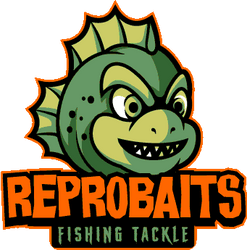
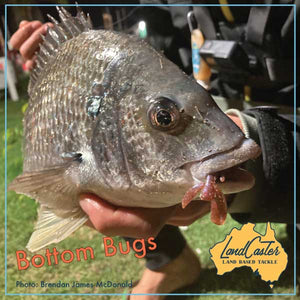
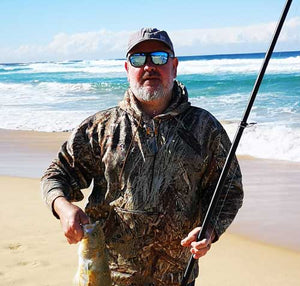
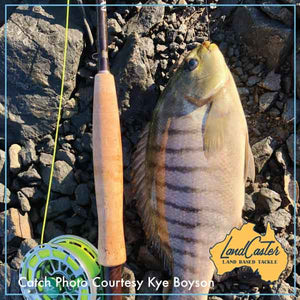
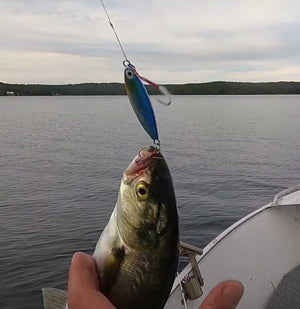
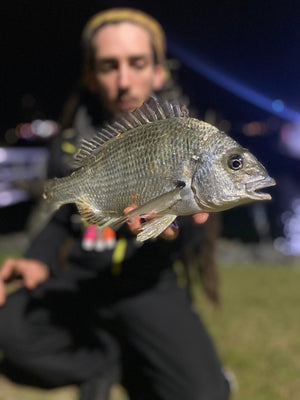
Leave a comment